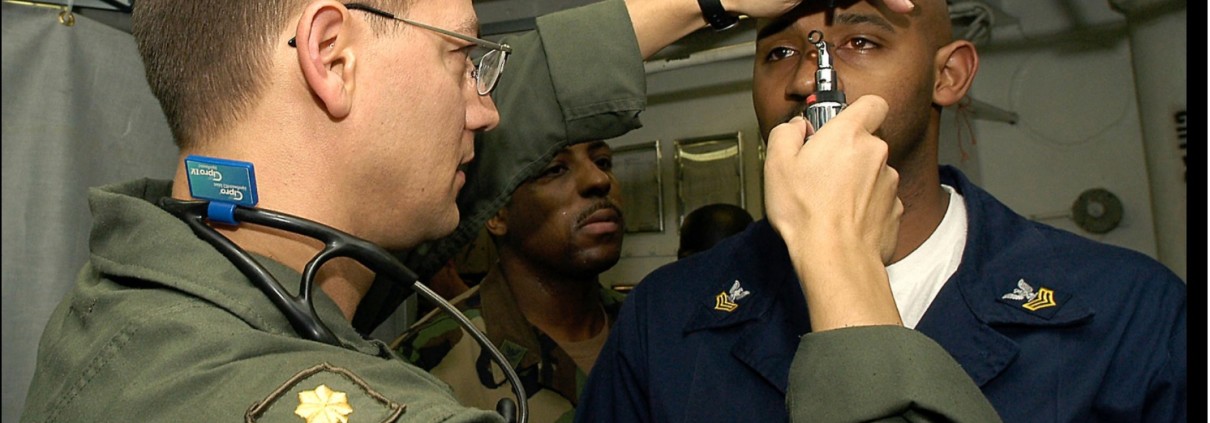The History of Military Flight Doctors
The history of medicine dates back thousands of years during the ancient civilizations in China and Egypt. Medicine has progressed significantly throughout the ages and continues to make strides through scientific research. However, it wasn’t until the invention of flight that physicians had the opportunity of tending to the sick who were in different regions of a country.
It seems like people have been obsessed with flight since the dawn of time, but only the brave made many attempts to replicate flight. In fact, some individuals designed “wings” out of various materials, but the inventions always failed. Unfortunately, the inventors either succumbed to their death or were severely injured from their falls. Doctors who treated these men are some of the first doctors to practice “Aerospace Medicine.” During these examinations, physicians determined that their patients often suffered from hypoxia. Hypoxia is when the body does not receive adequate oxygen, which is transported via the bloodstream, to tissues and other organs of the body.
The first hot air balloon took flight in 1783 in Paris. According to GoFlightMedicine.com, the balloon rose 3,000 feet into the air for a total of 25 minutes. Thus, began the history of aviation. In the following year, two doctors, Dr. John Shelton from Great Britain, and Dr. John Jeffries from the US recorded physiologic responses that the pilot had in flight. During this time, another American physician by the name of Dr. Benjamin Rush discovered that one of the first signs of hypoxia is an elevated heart rate.
Two men are recognized as the “Father of Aviation Medicine.” In no significant order, the first was a French physiologist, Paul Bert and the other gentleman was US Brigadier General Theodore Lyster. Mr. Bert conducted hundreds of experiments to determine how flight affected the human body. He also invented the hypobaric chamber which was used to simulate heights of 36,000 feet. He used this device to determine how higher elevations gravely reduced oxygen in the body. Paul strongly advised pilots to use supplemental oxygen when flying. General Lyster was instrumental in establishing a set of standards for selecting US pilots. He came from a physiological standpoint and wanted to ensure that pilots were healthy enough to withstand the physical demands they face in the air. Theodore was the first man to create the idea of a flight surgeon. At that time, during World War I, the primary function of a flight surgeon was to care for the pilot and those in the aircraft. In 1917, General Lyster became the first Chief Surgeon, Aviation Section, for the US Army and later in his career; he founded the Air Service Medical Research Laboratory.
In 1922, Dr. Louis Bauer began the Army of School of Aviation Medicine, and in 1926, he published the textbook, Aviation Medicine. That same year, President Calvin Coolidge signed the Air Commerce Act of 1926 into law. Two years later, Dr. Bauer and a host of other physicians established the Aero Medical Association of the United States. The purpose of this association was to evaluate civilian pilots according to the medical standards that were implemented by the aviation medical examiners. These standards are still being used today to assess pilots.
When a service person was injured during the Vietnam War, it took 45 days to return that soldier to the US and receive proper care. As you can imagine, 75 percent of the wounded soldiers survived, and the US lost many soldiers because of this. Thankfully, there have been outstanding improvements in ensuring that our men and women in enemy territories receive the proper treatment in flight back to the US. Now, the Air Force has a serviceperson in the US within three days, no matter where they are in the world with a survival rate of 98 percent. And unlike the past, when the flight surgeon was primarily looking out for the welfare of the pilot, now planes are staffed with a full medical team, including an intensive care doctor. Most of the physicians wear the flight suit uniform while on this kind of mission, even if they are not a trained pilot. The aircraft are also furnished with proper medical equipment to address physiological changes for safe treatments while the patient is in flight.
As you can see, there is a rich history behind flight doctors. They are an essential part of the military and do everything in their power to ensure that soldiers come home to the US safely so that they can receive proper care upon arrival in the States.



